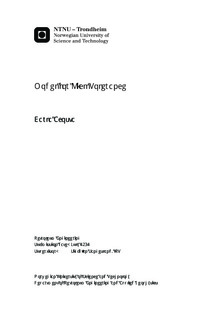| dc.description.abstract | Kick Tolerance is an important factor in the industry, that allows drilling engineers to establish several parameters in the development phase of a well, such as casing depths, open hole lengths, etc. It can also be considered a valuable safety factor to prevent well control problems.Several different definitions and calculation approaches were found for this term, and when you have something as dynamic and fast-paced as it is the oil & gas industry it is an important issue, since this lack of standardization leads to confusion and miscommunication.In chapter 3 and 4 the current calculation method, industry approach and knowledge of the term is quickly reviewed. Different kick tolerance software was analyzed in order to outline assumptions, compare results and calculation methodologies. Two main groups were distinguished: VBA macros for Microsoft Excel and standalone applications. The software presented in this work is developed in an attempt to overcome the main difficulties and disadvantages found during the initial analysis of the previously mentioned programs. Well: Thesis work , analyzed in chapter 5, presents real data from an exploration well that, when planned, was expected to be an easy to accomplish task by the drilling crew, not at all troublesome. In the original analysis, pre-development, an extremely high kick tolerance was found (≈90bbl or ≈15 m3), and drilling and casing designs were made accordingly. Operations for the 8.5 section where estimated to last 5 8 days with a specific budget. Several small kicks were presented during the drilling operations, and about 100m before TD was reached, a gas kick occurred, even though the original analysis showed a high margin before trouble was supposed to be encounter, once killing operations started, it became clear that control was not going to be easily regained, ultimately leading to the abandonment well.Many different reasons could have led to this much trouble, i.e. using data from nearby wells without later updating this information with the real data found for this specific well, not taking into consideration all the factors involved on the calculation, etc. This would have helped readjust different parameters before the incident happened, with high probabilities of a different, and more positive, outcome. | nb_NO |

